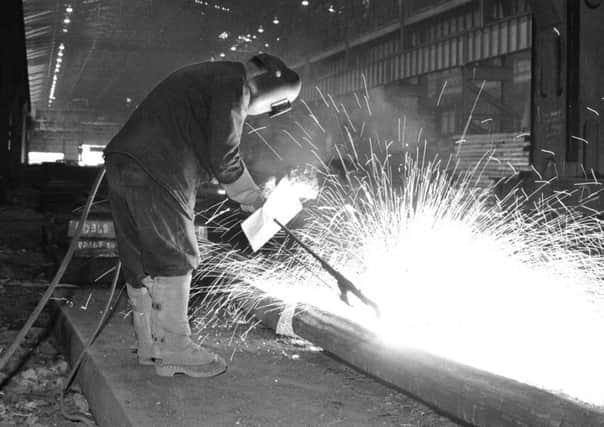Leader: Government must forge steel’s future


In the two decades that have passed since the closure of Ravenscraig, Scottish heavy industry has endured a tumultuous time. Few who depend on it for their livelihood believe there will be a return to long past halcyon days, but given the way they have weathered any number of blows over the years to maintain a vital if diminished hub of the nation’s economy, the very least they can expect is help in their bid for survival.
That is why First Minister Nicola Sturgeon must redouble her efforts and ensure the Scottish Government does not allow the proud history of Scotland’s steel industry to come to an abrupt end this week.
Advertisement
Hide AdAdvertisement
Hide AdTomorrow, Tata is expected to confirm its plans to close its Dalzell plate rolling works in Motherwell and its Clydebridge plant in Cambuslang, with the loss of around 400 jobs. It represents devastating news not just for those communities and families directly affected, but the country as a whole. If the closures are allowed to go ahead without any form of intervention, expertise and skills amassed over several decades and passed down from one generation to the next will be brought to an end overnight.
Ms Sturgeon has vowed to leave “no stone unturned” in her attempt to rescue the traditional industry, telling the SNP conference at the weekend that “if our worst fears are realised” she would immediately establish a task force to work with the company, trade unions and local authorities.
Yet ambiguity continues to surround what her administration might do, and how fast. Asked yesterday if the Scottish Government would step in to keep the plant running if Tata walks away, Shona Robinson said it was “too early to rule anything in or out at this stage”.
“People haven’t got round the table,” she added. “We will have to see what the art of the possible is, what the UK Government are going to do and what our role can be along with the unions and the workers.”
While such caution is to be expected, the potentially catastrophic consequences of closures and lay-offs mean that the Government cannot simply wait and see where the chips fall. It must lead the charge to save the steel industry as a matter of urgency.
John Park, the assistant general secretary of the Community union, made an astute point yesterday when he said the Scottish Government must examine its public infrastructure plans and work with a wide spectrum of industry to develop a proper strategy for the sector.
One of the highest profile such projects in recent years, the new Forth Bridge, made use of more than 37,000 tonnes of steel – yet none of it was forged in Scotland; more than half was fabricated in Shanghai, with the rest coming from Seville and Gdansk. European rules on contracts and tenders may well have played a part, but a lack of political will to help an ailing domestic industry was also a factor.
It is to be hoped that the fallout from that project did not represent the beginning of the end for the last of Scotland’s steel plants. The full impact of that blow will only be evident in the years to come, but this week the Scottish Government has an opportunity to help forge a lasting and viable future.